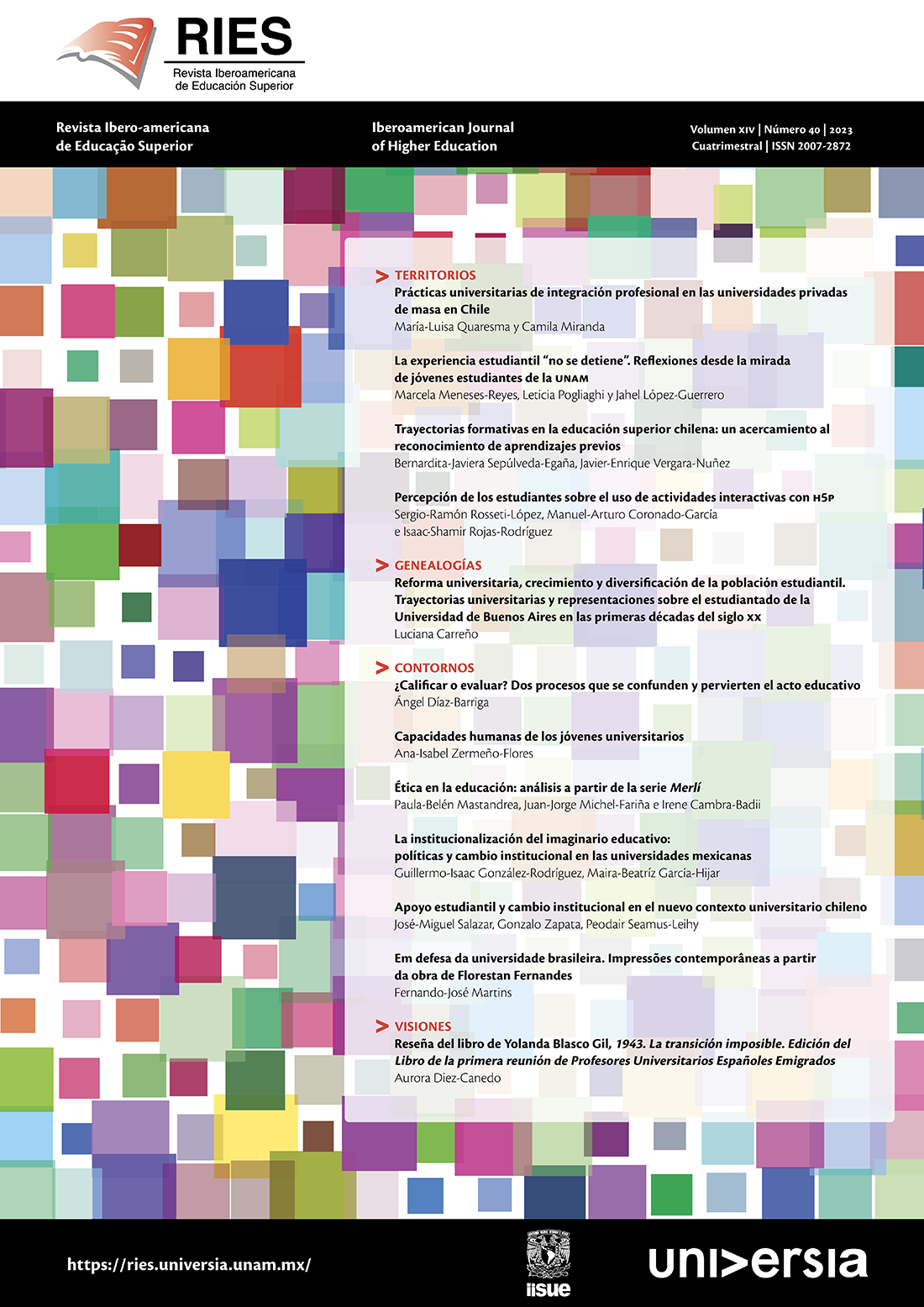University Reform and diversification of the student community. Trajectories and representations of the Universidad of Buenos Aires's student body during the first decades of the twentieth century
DOI:
https://doi.org/10.22201/iisue.20072872e.2023.40.1546Keywords:
students, universities, University Reform, ArgentinaAbstract
This article analyzes the student community of the University of Buenos Aires (UBA), Argentina, during the first decades of the 20th Century. It adopts a research approach that focuses on student trajectories and the social representations that accompanied the process of enrollment growth, which has been scarcely studied in the academic literature on the topic. To do so, we analyzed the student files, student applications and institutional regulations, with the purpose of reviewing the diversification of the enrollment with the entry of women and students who represented the first generation of their families to have access to the university. The conclusions highlight that the circulation of the term "middle class" referring to the student community was very limited, but that different notions began to be discussed, such as that of "poor students", which at the time structured the social universe. At the same time, they show the reduced growth of enrollment during this period, the impact of normative ideas about gender and restrictions in the supply of secondary education on the access of women to university.



